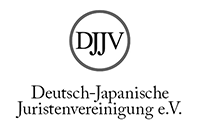Entschuldung von Staatsunternehmen in Japan
Abstract
After more than a decade of economic crisis, Japan now again reports constant economic growth due to an increase of capital expenditure and exports. However, the country still faces the problem of its high national debt. According to the Japanese Ministry of Finance, Japan’s national debt amounted in 2005 to 774 trillion yen (approximately 5.15 trillion euro), which corresponds to 151.6% of its nominal GDP, the highest among the industrial countries. These figures do not include the enormous debts of Japan’s state-owned enterprises, which are financed by the national Fiscal Investment and Loan Program. The FILP Program exists as a special budget in addition to the regular national budget and is not included in the official statistics on Japan’s national debt. Japan’s National Railways (JNR) and highway corporations alone carry a burden of former liabilities of 40 trillion yen (approximately 270 billion euro) each.
The effort of the Japanese government to reduce the debt of its public corporations dates back to the mid-80s and still continues today, in particular with the ongoing privatization of the Japanese postal services. After a brief overview of Japan’s fiscal system and the nature of Japanese state-owned enterprises, this article will explain the financing of state-owned enterprises by the FILP Program, and in particular the privatization of Japan’s National Railway (JNR), highways, and post office as a means of “slashing the national debt.”
The article comes to the conclusion that only a serious reform of Japan’s fiscal system, which currently still provides for two co-existing budgets, can accomplish lasting debt relief of Japan’s public corporations rather than merely a conversion of their respective debt.






